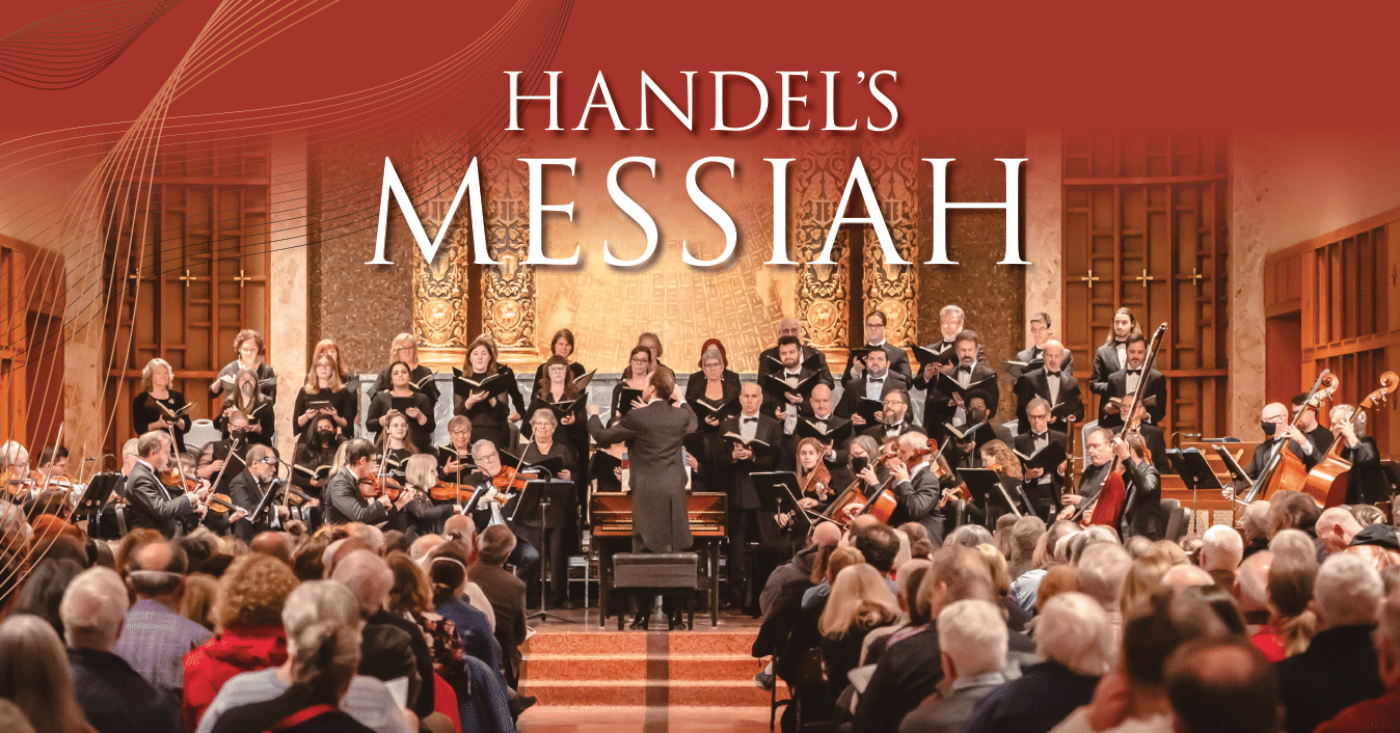
Saturday, December 14, 2024 • 2:30 p.m.
First Free Methodist Church (3200 3rd Ave W, Seattle)
Sunday, December 15, 2024 • 2:30 p.m. [SOLD OUT]
Bastyr University Chapel (14500 Juanita Drive NE, Kenmore)
Harmonia Orchestra & Chorus
William White, conductor
Ellaina Lewis, soprano
Soon Cho, mezzo-soprano
Andrew Etherington, tenor
José Rubio, baritone
Program
George Frideric Handel (1685 –1759)
Messiah, HWV 56
- full program (PDF)
About the Concert
Handel’s Messiah is a revered institution — in Harmonia’s hands, it’s a party. Dueling harpsichords, vocal theatrics and a maximalist approach to every bar have set Harmonia’s interpretation of this score apart for so many years. You won’t hear a Messiah with such dash and flair anywhere else.
This performance will last approximately 3 hours and 20 minutes, including two intermissions.
Maestro’s Prelude
Dear Listeners,
I am delighted to welcome you all to today’s performance of Handel’s Messiah, and if this is your first time attending a Harmonia concert, I bid you an extra special welcome indeed.
Our organization first performed music from Messiah in 1970 and has been mounting productions of the complete work nearly every December since 1976, meaning that we’ve been presenting this piece for almost half a century. That’s nothing to sniff at, but when you consider that Messiah is the oldest piece of music with a continuous performing tradition (dating back to 1741), it’s humbling. Our half-century of Messiah doesn’t even cover one-fifth of the 283-year lifespan of this most extraordinary work.
This weekend’s performances represent my sixth time conducting Messiah. I’ll admit that when I started as Harmonia’s music director in 2018, I was a bit taken aback that I was expected to lead performances of the oratorio in its complete form. You see, with very few exceptions, every other organization that presents Messiah makes cuts to the score. The general wisdom in the music industry is that a concert that lasts three and a half hours (and that has two intermissions) is a bridge too far. I can’t blame them — I used to feel the same way!
During the course of my first Messiah performances in 2018, I had my Damascene conversion, and now I can’t imagine doing this piece any other way. Yes, it’s a gargantuan work, but Handel has paced it with a dramatic logic that is irresistible. When I conduct it, I feel like one of those surfers who ride 30-foot mega waves off the coast of Portugal. It’s Baroque music as extreme sport, and with a team of musicians who embrace the piece so fully, it’s hard to imagine anything quite as thrilling.
— Will White
P.S. If bracing Baroque oratorios are your jam, then let me extend a personal invitation to join Harmonia on Saturday, March 29 for our performance of Bach’s Mass in B minor. If any piece can give Messiah a run for its money in terms of magisterial delight, it’s Bach’s mass. Plus, it’s about an hour shorter (if you care about that sort of thing).
P.P.S. If you’re reading this in Bastyr Chapel, we invite you to rejoin us eight weeks hence, just down the road at the new Northshore Concert Hall. Much as Bastyr is a perfect environment for Handel’s Messiah, the modern concert facility now located nearby will greatly enhance the program we have in store for you: a Weber overture, Shostakovich’s epic fifth symphony and a Mahler song cycle featuring an extraordinary American vocalist, Katherine Goforth.
P.P.P.S. If you’re reading this at FFMC and witnessed Katherine’s 2023 Harmonia debut there on a moment’s notice, you already know that the drive north will be well rewarded. If you weren’t there, ask someone who was.
About the Soloists
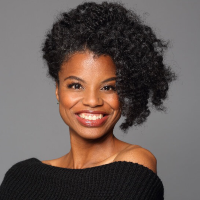
Soprano Ellaina Lewis demonstrates an extensive range of vocal and dramatic ability. Originally from Washington, D.C., she now makes her home in Seattle. In addition to Seattle Opera, where she sang the roles of Girlfriend II in Blue and Strawberry Woman in Porgy and Bess, Ms. Lewis has performed with numerous other arts organizations across the region, including Puget Sound Opera, Tacoma Opera, Seattle Choral Company, Everett Philharmonic, Sammamish Symphony, ArtsWest, Northwest New Works Festival, Northwest Opera in Schools, Etc., Ladies Musical Club, Cascade Symphony and Pacific Northwest Ballet School. Her principal opera roles include Violetta in La Traviata, Amina in La Sonnambula, Monica in The Medium, the title role in Treemonisha, Erzulie in Flaherty’s Once on This Island, Pamina in The Magic Flute and Gertrude in Hansel and Gretel. On the concert stage, her repertoire ranges from Haydn’s Creation and Mozart’s Exsultate Jubilate to Villa Lobos’ Bachianas Brasileiras No. 5 and Gershwin’s Porgy and Bess. Recent orchestral performances include Mahler’s Symphony No. 4 with Philharmonia Northwest and the title role (created expressly for her) in the world premiere of William White’s opera-oratorio Cassandra with Harmonia.
- Learn more: lainalousoprano.com
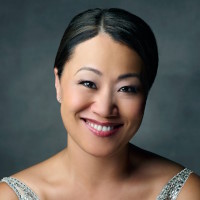
Praised by Opera News for her “potent presence” and as “regal in bearing, with vocal endowments to match” by The Cincinnati Post, lyric mezzo-soprano Soon Cho has gained recognition for her sensitive artistry and
winning execution on the recital, concert and opera stages, and has performed across the United States and in Australia, Belgium, Canada, China, France, Great Britain, Italy, New Zealand and South Korea. She has been featured as a soloist in works by Bach (St. John Passion with the Vocal Arts Ensemble), Mozart (Requiem at the Forbidden City Concert Hall in China), Beethoven (Choral Fantasy with the Cincinnati Symphony and May Festival Chorus), Dvořák (Stabat Mater with the Honolulu Symphony) and Mahler (Kindertotenlieder with the Breckenridge Music Festival). On the operatic stage, she has sung leading roles in Ariadne auf Naxos, Così fan tutte, Dido and Aeneas, Norma, Gianni Schicchi, Hansel and Gretel, L’Enfant et les Sortilèges and Dialogues of the Carmelites. An associate professor of voice at Pacific Lutheran University, Dr. Cho received a D.M.A. and Artist Diploma from the University of Cincinnati College-Conservatory of Music, an M.M. from the Shepherd School of Music at Rice University, and a B.A./B.M. from the University of Washington.
- Learn more: plu.edu
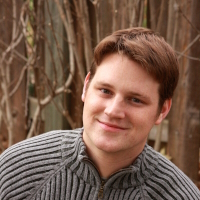
Tenor Andrew Etherington, a native of Overland Park, Kansas, began his studies at Ole Miss, followed by time honing his singing and stage skills with Bill Hall’s American Opera Studio. While pursuing his masters in performance and pedagogy at the Peabody Institute, he performed with Lyric Opera Baltimore, Baltimore Concert Opera and Washington National Opera. In 2015, he joined the voice faculty of Olympic College in Bremerton, where he currently lectures, teaches applied voice and directs. At Seattle Opera, Mr. Etherington has been a regular opera chorister since 2017 and occasionally covers roles and performs comprimario parts. He has also performed with the Bremerton Symphony, Tacoma Opera, Vashon Opera, Pacific Northwest Opera and Puget Sound Concert Opera, and has been artistic director of Kitsap Opera since 2023, where recent productions have included Menotti’s Amahl and the Night Visitors and Rossini’s La Cenerentola.
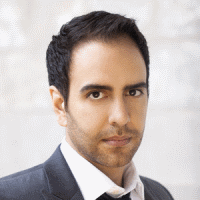
Internationally acclaimed baritone José Rubio has garnered attention performing at major and regional venues around the world. Recent international operatic engagements include debuts in Germany at the Berlin Staatsoper, the famed Elbphilharmonie concert hall in Hamburg, and in Vienna at the historic Ronacher Theater. He is among the first westerners to sing leading roles in contemporary Chinese operas, leading to his debuts at the most important opera houses in China. Mr. Rubio’s operatic credits include title roles in Il Barbiere di Siviglia, Don Giovanni, Le Nozze di Figaro and Gianni Schicchi. He has sung principal roles for Cincinnati Opera, Seattle Opera, Portland Opera, Nashville Opera, Alamo City Opera, Asheville Lyric Opera, Tacoma Opera, Vashon Opera, Juneau Lyric Opera and Pacific Northwest Opera, among many others. On the concert stage, he has given recitals at Carnegie Hall, recently made his solo debuts at Lincoln Center and the Kennedy Center, and appeared as soloist with the Philadelphia Orchestra, The Orchestra Now, Shenzhen Symphony, Suzhou Symphony, Albany Symphony, Evansville Philharmonic, Bellingham Symphony, Philharmonia Northwest and Rogue Valley Symphony. Recent and upcoming performances include multiple world premieres (among them the opera Tres Minutos with Music of Remembrance in Seattle and San Francisco), a cantata based on the New York Times bestseller A Wolf Called Romeo with the Juneau’s Orpheus Project, and a Chinese-language chamber piece (Fantasy on Tang Poetry).
- Learn more: joserubiobaritone.com
Program Notes
George Frideric Handel
Messiah, HWV 56
Handel was born in Halle, Germany, on February 23, 1685, and died in London on April 14, 1759. He composed Messiah between August 22 and September 14 of 1741. The oratorio was first performed in Dublin on April 13, 1742, under the direction of the composer. In addition to a quartet of vocal soloists and choir, the work calls for 2 oboes, bassoon, 2 trumpets, timpani, harpsichord and strings.
Handel, renowned in his day as an organist and as a highly prolific writer of Italian operas and English oratorios, was born in Germany in 1685 about a month before J.S. Bach. He received his musical training in Italy, and later became 18th-century England’s “national composer.” Between February and November 1741, Handel — suffering at the age of 56 from various ailments, both financial and physical — withdrew increasingly from public life. At some point that year, the composer received from the Lord Lieutenant of Ireland and the governors of Dublin’s three major charitable institutions an invitation to travel to that city to aid the charities through the performance of his music. Handel was well known in Dublin as a church-music composer, and his works were often played there to benefit charities. It may thus have been this invitation that provided the incentive for Handel to compose “a new sacred Oratorio.” In July of 1741, Charles Jennens, who was responsible for the texts of Handel’s oratorios Israel in Egypt and Saul, gave the struggling Handel the libretto of Messiah, a compilation of biblical texts from both the Old and New Testaments.
On August 22, Handel began to set Jennens’ text to music. He finished the first part of his new oratorio (which deals with the prophecy of Christ’s coming and his nativity) in six days, the second part (which describes Jesus’ suffering, death, resurrection, and ascension, the spread of his gospel, the resistance of the heathen, and the vision of the ultimate triumph of the gospel in the establishment of God’s kingdom) in nine days, and the third part (which celebrates the gift of resurrection and eternal life offered to all through Christ’s victory over death) in six more days, with two or three additional days for completing the orchestration. Regarding Handel’s state of mind during Messiah’s composition, biographer Jonathan Keates observes in his 1992 book Handel: The Man and Music that “etherealized visions of the elderly master refusing food, weeping into the semiquavers and having angelic hallucinations are mostly moonshine.”
In the autumn of 1741, Handel accepted the invitation to visit Dublin, arriving there on November 18 with the completed score of Messiah in his traveling bags, but it was not until April 13, 1742, that the oratorio received its premiere. Seven hundred people were able to squeeze into Dublin’s Musick Hall in Fishamble-street to hear the work performed by the choirs of Dublin’s two cathedrals (totaling fewer than 40 men and boys) and the string band (reinforced occasionally by trumpets and timpani — oboe and bassoon parts were written later), all directed from the keyboard by Mr. Handel himself. The work created a sensation: “Words are wanting to express the exquisite Delight it afforded to the admiring crouded Audience,” exulted Faulkner’s Journal. “The Sublime, the Grand, and the Tender, adapted to the most elevated, majestick and moving Words, conspired to transport and charm the ravished Heart and Ear.” Handel divided his share of the proceeds (about £400), as did the other performers, among Dublin’s three most important charities.
Messiah is unique among Handel’s works, being his only biblical oratorio using texts from the New Testament, and his only “Christian-contemplative” oratorio. Although the text is not a dramatic narrative but an epic-lyric poem celebrating Christian redemption, Handel’s musical approach in setting Jennens’ libretto was decidedly dramatic. The work’s three parts recall the three acts of Italian operas, and the oratorio is indeed a piece designed by a seasoned operatic professional to “entertain,” in the best sense of the word, listeners in a concert room, not chiefly to instruct or edify a congregation or to be used in any sort of worship.
Handel synthesizes the best elements of the three musical traditions in which he was steeped: the Italian, the German and the English. He makes use of Italian forms of musical expression, borrowing, rearranging and transforming into “duet-choruses” (such as “And he shall purify”) some passages from his own Italian love duets. In the “Pastoral Symphony” (entitled Pifa) that introduces the shepherds, Handel alludes to the music of the pifferari, the country bagpipers who descend the Italian mountains during the Christmas season to play in village streets. Handel employs German musical ideas, particularly in the music describing Jesus’ suffering and death, where the jagged dotted rhythms and forceful harmonies have a particularly German expressive quality. In that great “coronation march,” the “Hallelujah Chorus,” melodic fragments echoing the German chorale “Wachet auf” may be heard in “The kingdom of this world” and in “And he shall reign for ever and ever.” Handel’s melodic shapes, vocal treatment, grand anthem-like choruses, and text-setting display the “English character” that has ensured Messiah’s unchallenged supremacy in the English choral repertoire: in such arias as “He was despised” and “I know that my Redeemer liveth,” the rhythms of the music grow out of the natural speech rhythms of the words, so that the music expresses the text directly and powerfully, and then illustrates it almost visually (e.g., “Every valley shall be exalted,” “The people that walked in darkness,” and “All we, like sheep”).
The easy accessibility and glorious variety of the music that results from the confluence of these elements (and which often conceals the exalted art underlying it) has helped to guarantee Messiah’s survival, through a seeming infinitude of “arrangements,” versions and types of presentation, as one of the most popular pieces ever composed. As R.A. Streatfeild observes, “Messiah, if not Handel’s greatest work, is undoubtedly the most universal in its appeal” because it continues to sing to “high and low, rich and poor, wise and foolish alike” a magnificent song of salvation, fresh, vital and full of aesthetic and spiritual grace.
— Lorelette Knowles
Harmonia and Messiah
The Seattle Chamber Singers first presented (the Christmas portion of) Messiah in December 1970, on a holiday program that included the world premiere of a cantata by the group’s founder, George Shangrow. In those early years George led annual sing-along Messiahs at University Unitarian Church, a tradition that began in 1969. And in 1975 he played harpsichord (“superbly,” according to The Seattle Times) in a Seattle Symphony performance of the work.
The following year George (described as a “young man of much hair” by a Times reviewer) conducted the first complete SCS Messiah, billed as “almost a duplicate of the first performance of Messiah as Handel first heard the work” and the Seattle premiere of this “Dublin version” of the score. KUOW-FM broadcast the concert live from Meany Hall and the Times critic praised the “crisp, clean, good sound, a chorus together in joyous harmony.”
The group presented Messiah almost every season that followed — except for 1983, 1985 (the Bach Year), 1993 and 1996 — until George’s death in 2010. The ensemble performed it that year in tribute to its founder, but took a break for the next two seasons, returning to the work during Clinton Smith’s first year as music director. Will White has continued this tradition.
One decision the conductor of any Baroque oratorio must make is which keyboard instrument(s) to use for the continuo section of the orchestra: organ, harpsichord, both? The earliest SCS performances generally featured a single harpsichord, invariably played by composer and keyboardist Robert Kechley, a founding member of the group. In 1984 he was joined by a second harpsichordist, but then continued solo until 1990, when George began playing and conducting from a second harpsichord, much as Handel himself would have done.
In 1998, the organization (with support from the PACCAR Foundation, King County Arts Commission, Visio Corporation, Dana Durasoff, Jon Lange and Alan Middleton) commissioned Michael Reiter of Tacoma to build a pair of instruments for use in Messiah and other Baroque works. Starting from kits made by Hubbard Harpsichords of Massachusetts, he created two instruments modeled on the French double-keyboard harpsichords of the 18th century. One contains three choirs of strings, while another has four sets of jacks instead of three. The first made its debut at our 1999 Messiah, joined by its companion the next year.
George and Bob played these harpsichords for Messiah thereafter until George’s death, when this practice subsided. Our orchestra continued to employ one of the instruments for Baroque works, while the other resided at Benaroya Hall for many years, used by the Seattle Symphony and distinguished guest artists for many of their Baroque performances (along with some 20th- and 21st-century works requiring harpsichord).
In 2019, Seattle-based harpsichord builder David Calhoun overhauled both instruments to his exacting specifications and we welcomed Bob Kechley back to the keyboard for our Messiah concerts, sitting opposite Will White at the second harpsichord. These days, Will is joined by Sheila Bristow at the harpsichords, with additional support from a portative organ and a theorbo.
